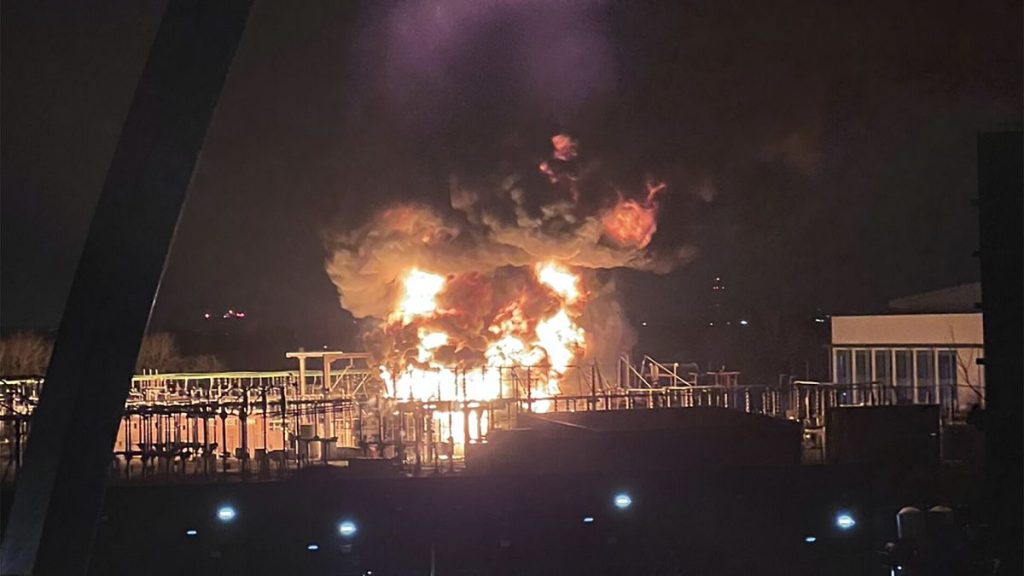A significant fire incident at Heathrow Airport has raised alarms about the resilience of Britain’s energy infrastructure, especially in the wake of heightened concerns about potential threats. The fire, which occurred at one of the airport’s vital electrical substations, resulted in prolonged shutdowns and massive disruptions, affecting over 200,000 passengers and leading to the cancellation of more than 1,300 flights. As airport officials grapple with the implications, investigations are underway to determine if the event reveals any vulnerabilities within the national energy system.
| Article Subheadings |
|---|
| 1) Overview of the Incident |
| 2) Response from Airport Officials |
| 3) Impacts on Passengers and Airlines |
| 4) Investigations and Official Statements |
| 5) Broader Implications for Energy Infrastructure |
Overview of the Incident
On a typical bustling Friday, Heathrow Airport, Europe’s busiest air hub, faced an unprecedented incident when a fire broke out at one of the three substations responsible for its power supply. The fire caused a drastic interruption; operations at the airport were halted for nearly 18 hours. Officials confirmed that the disruption led to immediate operational challenges that required a complete assessment of backup power systems. As one of the critical arteries of international travel, the incident posed significant questions about the reliability of essential services.
Response from Airport Officials
In response to the incident, Heathrow officials defended their actions amid scrutiny from the public and officials alike. With the fire under control, they emphasized efforts to restore power and resume operations efficiently.
“Hundreds of critical systems across the airport were required to be safely powered down and then safely and systematically rebooted,”
stated an airport spokesperson, highlighting the systematic approach needed to address the disruption. The airport maintained that they had worked diligently “as soon as safely and practically possible” to reconnect their power supply.
Impacts on Passengers and Airlines
The magnitude of the disruption extended beyond operational logistics, severely affecting the travel plans of over 200,000 passengers. The cancellation of more than 1,300 flights on that fateful day resulted in chaos for travelers, with many left stranded and uncertain about their journeys. Industry experts estimate that the financial ramifications for airlines could reach tens of millions of euros due to lost revenue and the costs of rebooking passengers. As the airport resumed operations, officials reported processing around 400,000 passengers on the weekend following the incident, indicating a quick bounce-back of sorts amidst considerable operational challenges.
Investigations and Official Statements
The investigation into the fire was initially led by counterterrorism police due to the ongoing geopolitical tensions and the threat narrative surrounding Russian-backed actions across Europe. However, after finding no evidence of foul play, the investigation was reassigned to the London Fire Brigade. Investigators are focusing on the electrical distribution equipment at the substation, evaluating maintenance and operational protocols that could have prevented such a situation. John Pettigrew, CEO of the National Grid, noted that operational redundancies exist, stating that each substation has the capacity to provide sufficient power independently. Yet, such a shutdown raises critical concerns about overall system resilience.
Broader Implications for Energy Infrastructure
Beyond the immediate effects on Heathrow, this incident has sparked widespread discussion regarding the robustness of Britain’s energy infrastructure. Officials have ordered an inquiry to determine “any wider lessons to be learned on energy resilience for critical national infrastructure.” As countries navigate increasingly volatile global tensions, the vulnerabilities exposed by this event may prompt serious reconsideration of energy security strategies, particularly in sectors deemed vital, such as transportation. Discussions about alternative energy solutions and emergency response protocols are likely to gain renewed urgency in the aftermath of these developments.
| No. | Key Points |
|---|---|
| 1 | A fire at Heathrow Airport resulted in an operational shutdown lasting nearly 18 hours. |
| 2 | Over 1,300 flights were cancelled, impacting the travel plans of approximately 200,000 passengers. |
| 3 | Investigations initially led by counterterrorism police found no evidence of foul play. |
| 4 | The National Grid CEO asserted that operational redundancies should have allowed for continued airport operations. |
| 5 | An inquiry has been ordered to evaluate resilience and response strategies for critical national infrastructure. |
Summary
The fire incident at Heathrow Airport serves as a critical reminder of the vulnerabilities inherent in the energy infrastructure supporting essential services. With a considerable number of flights canceled and widespread disruption to passenger travel, authorities are compelled to reflect on the broader implications for energy resilience across the nation. This event not only emphasizes the need for robust operational protocols in airports but also calls for systemic evaluations to enhance the resilience of critical infrastructure against potential hazards.
Frequently Asked Questions
Question: How did the fire impact Heathrow Airport operations?
The fire at Heathrow Airport resulted in a total shutdown of operations for nearly 18 hours, leading to the cancellation of more than 1,300 flights and disruptions for approximately 200,000 passengers.
Question: What investigations were conducted following the fire?
Initially led by counterterrorism police due to safety concerns, the investigation found no evidence of foul play and has since been handed over to the London Fire Brigade to focus on the electrical distribution systems.
Question: What are the potential long-term implications of this incident?
Experts suggest that this incident raises significant concerns about the resilience of the energy infrastructure in the UK, prompting discussions about the need for improvements in energy security and contingency planning for critical services.
